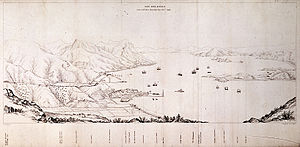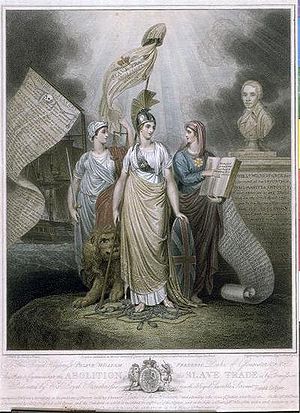Halfway between New Zealand and the Americas sits one of the most remote inhabited islands in the world. The tiny volcanic island of Pitcairn is separated from the rest of the world by thousands of miles of ocean, yet it gained surprising fame thanks to its original settlers.

The island was first discovered in 1606 by the Portuguese explorer Pedro Fernandez de Quiros. It was rediscovered in 1767 by a British ship, and named after the crew member who spotted the island. Owing to its size, however, Pitcairn was not suitable for large-scale colonization; thus, it was left alone.
In 1798, the crew of the HMS Bounty mutinied. After setting Captain William Bligh adrift with the remaining loyal crewmembers, Master Mate Fletcher Christian set off to look for a safe haven for himself and his small crew. Unable to properly man the ship with his nine companions, Christian made landfall in Tahiti where he recruited six men and twelve women. Together, this odd group found their way to the idyllic paradise of Pitcairn Island.
The island was uninhabited, warm, and replete with coconut palms and breadfruit. It was the perfect inaccessible hideaway for the mutineers. To avoid discovery and retribution, the sailors stripped the Bounty of her contents, then ran her ashore, and burned her to the ground, effectively erasing any clues as to their whereabouts.
The group of mutineers was led by Fletcher Christian and included Ned Young, John Adams, Matthew Quintal, William McCoy, William Brown, Isaac Martin, John Mills, and John Williams. Each of the sailors took a Polynesian woman for a wife, leaving the remaining three to be shared by the six Polynesian men.
Years went by, and the tiny community lived with alternating friction and peace. Some died, some were murdered, and by 1800, John Adams remained as the only male survivor of the original party, surrounded by ten Polynesian women and twenty-three children.

In 1808, American sealing Captain Mayhew Folger happened upon the tiny colony; however, little interest was paid to the island for six more years. In September of 1814, H.M.S. Briton and Tagus rediscovered the colony. The British commanders were so charmed by Adams’ care and leadership of the community that they felt it would be inhumane to arrest him for his long-passed crime.
The isolation was ended, and a relationship began between Pitcairn and the British Navy. Ships visited regularly, bringing books, tools and practical necessities in exchange for provisions.
Adams soon became concerned about the future of the island, and appealed to the British Government for a successor. Appeals were ignored; however, voluntary immigrants soon arrived, including shipwright John Buffett and Welshman John Evans. By 1828, the population had risen to 66, with the arrival of a few new residents including George Nobbs.
In 1831, the community briefly moved to Tahiti due to diminishing resources on Pitcairn. They were warmly welcomed; however, they were unhappy and many contracted infectious diseases (to which they had little natural resistance). The Pitcairn Islanders returned home just a few months later.
Increasing intrusions by American whalers let the Islanders to feel insecure in their tiny settlement. They reached out to British Captain Elliot of the H.M.S. Fly who provided them with a constitution and code of laws. While Pitcairn officially became a British settlement in 1887, the Islanders consider Elliot’s constitution to signify their formal incorporation into the British Empire.
Throughout the 20th century, the island was governed by magistrates appointed from the Christian and Young families; however, in 1970, governance of the island was transferred to the British high commissioners of New Zealand. Today, many of the islanders have emigrated to New Zealand, leaving the population at no more than 45.














